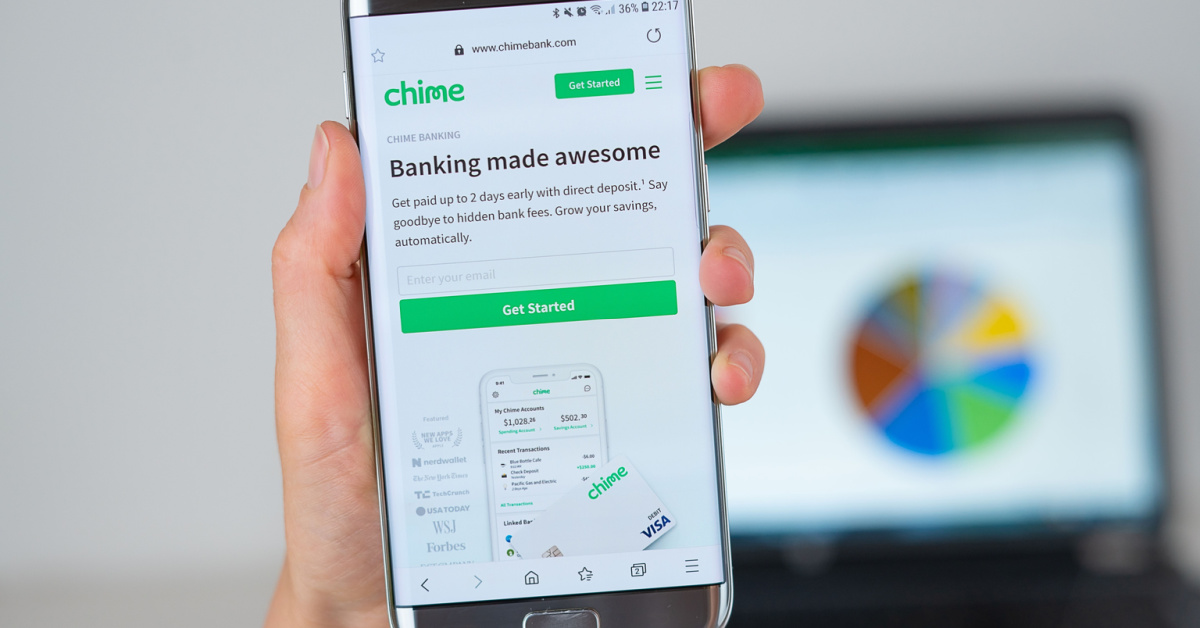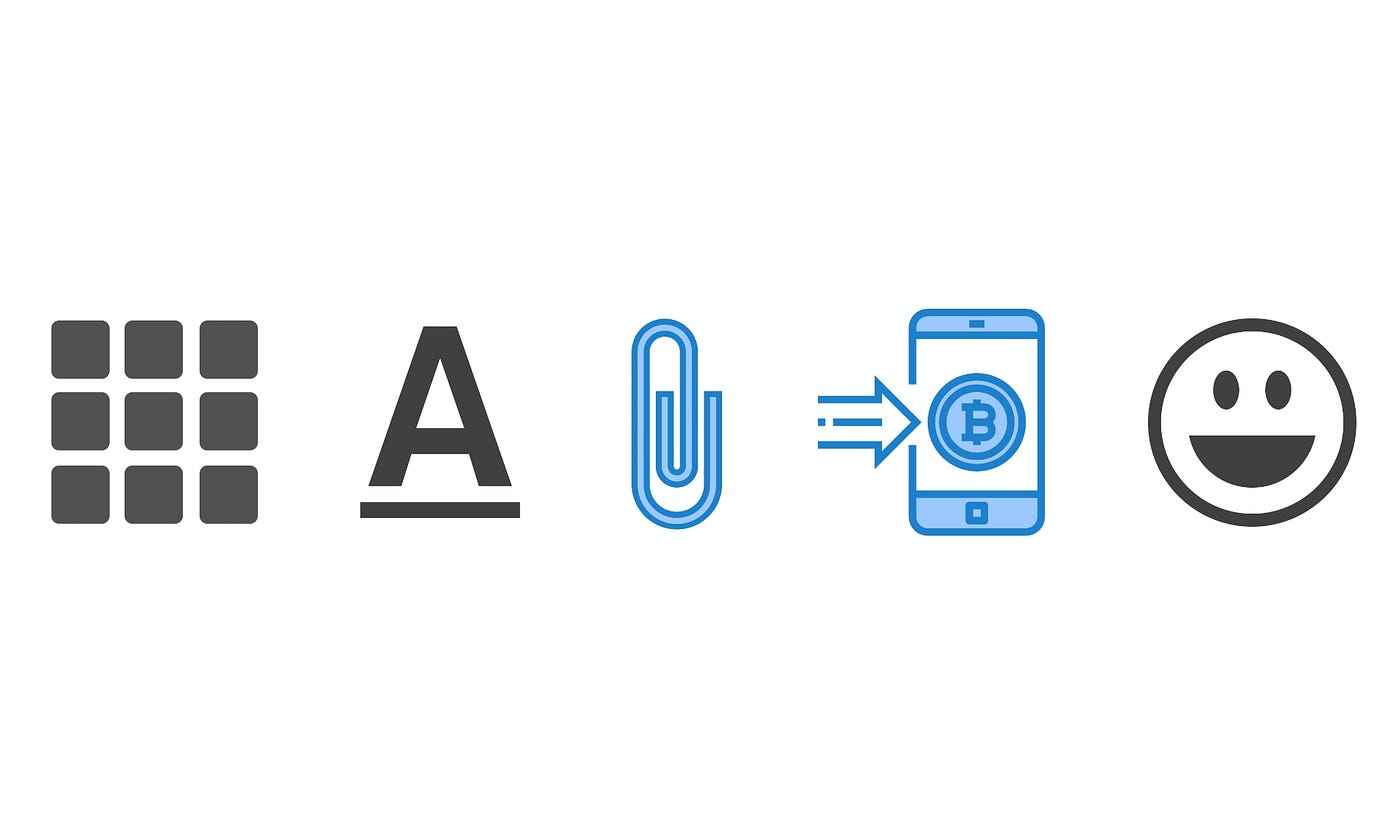Home>Finance>How To Transfer Money From Credit Card To Debit Card


Finance
How To Transfer Money From Credit Card To Debit Card
Modified: March 10, 2024
Learn how to transfer money from your credit card to your debit card effortlessly with our finance guide. Start managing your funds wisely today!
(Many of the links in this article redirect to a specific reviewed product. Your purchase of these products through affiliate links helps to generate commission for LiveWell, at no extra cost. Learn more)
Table of Contents
- Introduction
- Understanding the Difference Between Credit Cards and Debit Cards
- Is It Possible to Transfer Money From a Credit Card to a Debit Card?
- Methods to Transfer Money From Credit Card to Debit Card
- Method 1: Balance Transfer
- Method 2: Cash Advance
- Method 3: Peer-to-Peer Payment Apps
- Method 4: Payment Gateways
- Method 5: Bank Transfers
- Things to Consider Before Transferring Money from Credit Card to Debit Card
- Conclusion
Introduction
Welcome to the world of personal finance, where you hold the power to manage your money effectively. As technology continues to evolve, so too do our options for handling our finances. Credit and debit cards have become staples in our wallets, offering convenience and flexibility in our daily transactions.
While credit cards and debit cards serve different purposes, there may come a time when you need to transfer money from your credit card to your debit card. Whether you’re looking to consolidate debts, cover emergency expenses, or simply reload funds onto your debit card, understanding how to transfer money between these two cards can be immensely valuable.
In this article, we will delve into the world of credit cards and debit cards, explore the possibility of transferring money between them, and discuss various methods to facilitate these transfers.
So, let’s dive in and demystify the process of transferring money from a credit card to a debit card!
Understanding the Difference Between Credit Cards and Debit Cards
Before we explore the methods of transferring money from a credit card to a debit card, let’s first understand the fundamental differences between these two types of cards.
A debit card is directly linked to your bank account, allowing you to access the money available in that account. When you make a purchase using a debit card, the funds are instantly deducted from your account. It works like a digital version of a checkbook, providing real-time access to your available funds.
On the other hand, a credit card is a borrowing tool that allows you to make purchases on credit. When you use a credit card, you are essentially borrowing money from the card issuer, with the promise to repay the amount at a later date. The funds used for purchases on a credit card do not come directly from your bank account; instead, they accumulate as a balance that needs to be repaid on a specified due date.
Debit cards offer the advantage of using your own money, eliminating the risk of accruing debt. In contrast, credit cards offer additional benefits such as reward points, purchase protection, and the ability to build a credit history.
Now that we’ve established the basic differences between credit cards and debit cards, let’s explore whether it’s possible to transfer money from a credit card to a debit card.
Is It Possible to Transfer Money From a Credit Card to a Debit Card?
The simple answer is: yes, it is possible to transfer money from a credit card to a debit card. However, the process and availability of this option may vary depending on various factors, including the financial institution that issued your cards and the specific terms and conditions of your credit card.
While debit cards are meant for accessing funds from your bank account, credit cards are typically used for borrowing money. As a result, most credit card issuers do not explicitly offer a direct option to transfer money from a credit card to a debit card. This is because they prefer you to make payments directly from your bank account or repay the credit card balance through traditional means.
However, there are alternative methods and workarounds that can facilitate the transfer of money from a credit card to a debit card. These methods may involve additional fees or interest charges, so it’s essential to carefully consider the costs and consequences before proceeding with any transfer.
In the next section, we will explore several methods that you can utilize to transfer money from your credit card to your debit card.
Methods to Transfer Money From Credit Card to Debit Card
While credit card issuers generally do not provide a direct option to transfer money from a credit card to a debit card, there are several methods available that can help you accomplish this transfer. Let’s explore some of these methods:
- Balance Transfer: Some financial institutions allow you to transfer the outstanding balance from your credit card to a debit card. This method typically involves applying for a balance transfer facility, which may come with a promotional interest rate for a specific period. Keep in mind that balance transfers may attract fees, and it’s important to understand the terms and conditions before proceeding.
- Cash Advance: Another option is to use your credit card to withdraw cash from an ATM and then deposit it into your debit card or bank account. Keep in mind that cash advances often come with high interest rates and transaction fees, so it’s important to consider the associated costs before using this method.
- Peer-to-Peer Payment Apps: Nowadays, there are numerous peer-to-peer payment apps available that allow you to transfer funds between different accounts, including from a credit card to a debit card. These apps act as intermediaries, facilitating the transfer without directly involving the credit card issuer. However, some of these apps may charge fees for such transactions, so it’s important to compare and choose the one that suits your needs.
- Payment Gateways: Payment gateways or online payment platforms can also be used to transfer money from a credit card to a debit card. These platforms often charge transaction fees, and the availability of this option may depend on whether the specific payment gateway supports transferring funds from credit cards to debit cards.
- Bank Transfers: While not a direct transfer from your credit card to your debit card, you can consider transferring funds from your credit card to your bank account and then transferring the funds from your bank account to your debit card. This method may involve cash advance fees and interest charges, depending on your credit card and bank’s terms and conditions.
It’s important to carefully evaluate the costs, terms, and conditions associated with each method before proceeding with the transfer. Consider factors such as interest rates, fees, and eligibility requirements to make an informed decision.
Now that we’ve explored some common methods to transfer money from a credit card to a debit card, let’s discuss a few essential things to consider before initiating such a transfer.
Method 1: Balance Transfer
One method to transfer money from a credit card to a debit card is through a balance transfer. Balance transfers allow you to move the outstanding balance from one credit card to another, including a debit card. Here’s how it works:
1. Research and compare balance transfer offers: Start by researching different financial institutions and credit card issuers to find balance transfer offers. Look for promotions with low or 0% interest rates for a specified period. Keep in mind that balance transfer offers may have certain eligibility requirements, such as a good credit score.
2. Apply for a balance transfer: Once you’ve found a suitable balance transfer offer, follow the instructions and apply for the transfer. The application process involves providing details of your credit card and debit card, and the amount you wish to transfer.
3. Understand the terms and conditions: Before proceeding with the balance transfer, make sure you understand the terms and conditions associated with it. Take note of any fees, the duration of the promotional interest rate, and any other relevant information.
4. Initiate the balance transfer: If your balance transfer application is approved, the next step is to initiate the transfer. The credit card issuer will transfer the specified amount from your credit card to your debit card or bank account.
5. Repay the transferred balance: It’s important to remember that the transferred balance is still a debt that needs to be repaid. Take note of the due dates and ensure that you make regular payments to repay the balance before the promotional interest rate expires. Failing to repay the balance on time may result in high interest charges.
Balance transfers can be a convenient way to consolidate debt or access funds from a credit card to a debit card. However, it’s important to carefully review the terms and conditions, including any fees and interest rates, before proceeding with a balance transfer. Additionally, keep in mind that balance transfers may be subject to eligibility requirements and approval from the credit card issuer.
Now that we’ve covered the first method, let’s move on to exploring another method: cash advances.
Method 2: Cash Advance
If you need to transfer money from a credit card to a debit card urgently, another option is to utilize a cash advance. A cash advance allows you to withdraw cash from your credit card at an ATM or bank branch and then deposit it into your debit card or bank account. Here’s how this method works:
1. Check your credit card’s cash advance limit: Before proceeding with a cash advance, ensure that your credit card allows cash advances and check your cash advance limit. The cash advance limit may be lower than your credit limit, so it’s important to be aware of this restriction.
2. Find an ATM or bank branch: Locate an ATM or bank branch that accepts cash advances from your credit card. Make sure that the ATM or bank accepts credit cards for cash withdrawals.
3. Initiate the cash advance: Insert your credit card into the ATM and follow the instructions to withdraw cash. You may need to provide your PIN (Personal Identification Number) for the transaction. Alternatively, if you’re at a bank branch, inform the teller that you would like to perform a cash advance from your credit card.
4. Deposit the cash into your debit card or bank account: Once you have the cash, you can deposit it into your debit card or bank account. This can be done through your bank’s branch, ATM, or mobile banking app, depending on the options available to you.
5. Repay the cash advance: Keep in mind that cash advances often come with high-interest rates and transaction fees. It’s crucial to repay the cash advance amount as soon as possible to avoid accumulating excessive interest charges. Check your credit card statement or contact your credit card issuer to understand the repayment options and requirements.
While a cash advance can provide immediate access to funds, it’s important to weigh the associated costs, such as high-interest rates and transaction fees. Consider this method only if you have a clear plan to repay the cash advance amount promptly.
Now that we’ve covered the second method, let’s explore another option: peer-to-peer payment apps.
Method 3: Peer-to-Peer Payment Apps
In today’s digital age, peer-to-peer payment apps have gained immense popularity and become a convenient method to transfer money between individuals. Some of these apps also offer the ability to transfer funds from a credit card to a debit card. Here’s how this method works:
1. Choose a peer-to-peer payment app: Research and choose a reputable peer-to-peer payment app that supports transferring funds from a credit card to a debit card. Popular options include PayPal, Venmo, Cash App, and Zelle. Ensure that both your credit card and debit card are compatible with the selected app.
2. Set up your accounts: Download the chosen app onto your smartphone and set up accounts for both your credit card and debit card. Follow the app’s instructions to link your cards to the app, providing necessary banking information for verification purposes.
3. Add funds from your credit card: Once your accounts are set up and linked, you can add funds to the peer-to-peer payment app using your credit card. Follow the app’s interface to input the desired amount and complete the transaction. Take note of any transaction fees that may apply.
4. Transfer funds to your debit card: With funds loaded onto the payment app, you can now transfer the desired amount to your linked debit card. Open the app and navigate to the transfer or send money section. Select your debit card as the recipient and enter the amount you wish to transfer. Confirm the transaction and review any applicable fees or processing times.
5. Check your debit card for the transferred funds: After a successful transfer, check your debit card account to ensure that the funds have been deposited. Depending on the app and your bank, it may take some time for the funds to reflect in your debit card balance. Keep track of any email or notification confirmations provided by the app.
Peer-to-peer payment apps offer a convenient way to transfer money from a credit card to a debit card. However, it’s important to be mindful of transaction fees, transfer limits, and the security of your personal and financial information. Take the time to read through the app’s terms and conditions and set up appropriate security measures for your accounts.
Now that we’ve explored peer-to-peer payment apps as a method, let’s move on to discussing another option: payment gateways.
Method 4: Payment Gateways
In today’s digital landscape, online payment gateways have become a widely used method for processing electronic transactions. While payment gateways are primarily used for online purchases, some platforms also offer the ability to transfer money from a credit card to a debit card. Here’s how this method works:
1. Research and choose a payment gateway: Start by researching popular payment gateways that support transferring funds from a credit card to a debit card. Examples of well-known payment gateways include Stripe, Braintree, and Authorize.Net. Ensure that the selected gateway is supported by your credit card and debit card issuers.
2. Sign up and set up your account: Visit the website of your chosen payment gateway and sign up for an account. Follow the instructions provided to verify your identity and link your credit card and debit card to your account. Make sure to provide accurate banking information for seamless transactions.
3. Add funds to your payment gateway account: Once your account is set up, you can proceed to add funds to your payment gateway account using your credit card. Follow the platform’s interface to input the desired amount and complete the transaction. Take note of any fees or charges that apply.
4. Transfer funds to your debit card: With funds loaded onto your payment gateway account, you can initiate a transfer to your linked debit card. Access the funds transfer section within the payment gateway’s interface or dashboard. Select your debit card as the recipient and enter the desired transfer amount. Review any applicable fees or processing times before confirming the transaction.
5. Verify the transfer on your debit card: After a successful transfer, check your debit card account to ensure that the funds have been deposited. Depending on the payment gateway and your bank, it may take some time for the funds to reflect in your debit card balance. Keep any confirmation emails or notifications received from the payment gateway for reference.
When using payment gateways to transfer money from a credit card to a debit card, it’s important to review any transaction fees, transfer limits, and the security measures in place. Ensure that the payment gateway is reputable and trusted. Additionally, make sure to comply with the platform’s terms of service and guidelines for a smooth transfer experience.
Now that we’ve explored payment gateways as a method, let’s move on to discussing another option: bank transfers.
Method 5: Bank Transfers
When it comes to transferring money from a credit card to a debit card, bank transfers can be an indirect yet effective method. While this method may not involve a direct transfer between the cards, it allows you to move funds from your credit card to your bank account and then from the bank account to your debit card. Here’s how this method works:
1. Check if your credit card allows bank transfers: The first step is to check whether your credit card allows bank transfers. Some credit card issuers offer the option to transfer funds from your credit card to your linked bank account.
2. Set up your bank account: If you haven’t already, set up a bank account that is linked to your debit card. Ensure that the bank account accepts incoming transfers from credit cards.
3. Initiate the credit card to bank transfer: Contact your credit card issuer or check their online banking portal to initiate a transfer from your credit card to your bank account. This can typically be done by providing the bank account details and specifying the amount to transfer. Take note of any fees or interest charges associated with this transfer.
4. Wait for the transfer to complete: The transfer from your credit card to your bank account may take some time to process. It’s important to be patient and wait for the funds to be deposited into your bank account. Keep track of any confirmation emails or reference numbers provided by your credit card issuer.
5. Transfer funds from bank account to debit card: Once the funds have been deposited into your bank account, you can transfer them to your linked debit card. Use your bank’s online or mobile banking services, ATMs, or visit a bank branch to initiate the transfer. Follow the prompts and enter the desired transfer amount.
Bank transfers offer a more traditional approach to transferring money between cards. While this method may involve some additional steps and processing time, it can be a reliable option if direct transfers from a credit card to a debit card are not available.
Before proceeding with bank transfers, it’s important to review any associated fees imposed by your credit card issuer and bank. Additionally, consider the interest charges on the transferred amount and ensure that you have a repayment plan in place for your credit card balance.
Now that we have discussed all the different methods for transferring money from a credit card to a debit card, let’s move on to the next section to explore some important considerations before initiating such a transfer.
Things to Consider Before Transferring Money from Credit Card to Debit Card
Before you proceed with transferring money from a credit card to a debit card, it’s crucial to consider several important factors. These considerations will help you make an informed decision and avoid any potential pitfalls. Here are some key points to keep in mind:
- Costs and fees: Review the costs involved in the transfer process. Different methods may have varying fees, such as balance transfer fees, cash advance fees, transaction fees, or processing fees. Additionally, consider any applicable interest rates that may apply to the transferred amount.
- Repayment plan: Keep in mind that transferring funds from a credit card to a debit card does not eliminate your financial responsibility. You will still need to repay the transferred amount, whether through regular payments or by maintaining a positive balance in your bank account. Have a clear plan in place on how you will handle the repayment to avoid accruing unnecessary interest charges.
- Credit impact: Transferring a significant amount from your credit card to your debit card may impact your credit utilization ratio. This ratio plays a role in determining your credit score. If you use a large portion of your available credit, it could negatively affect your credit score. Understand the potential consequences on your creditworthiness before proceeding with the transfer.
- Eligibility and limits: Be aware of any eligibility requirements, limits, or restrictions associated with the transfer methods. Some options may only be available based on your credit score, credit limit, or relationship with the financial institution. Make sure you meet the necessary criteria to successfully execute the transfer.
- Security and fraud protection: Ensure that you are using secure and reputable platforms or methods for transferring money. Check for encryption, two-factor authentication, and other security measures to protect your personal and financial information. Additionally, familiarize yourself with the fraud protection policies of the involved parties to safeguard against unauthorized transactions.
- Alternative options: Consider alternative options for accessing funds or meeting your financial needs. Transferring money from a credit card to a debit card should be a well-considered decision. Assess if there are alternative solutions available, such as personal loans, emergency savings, or utilizing other financial resources that may be more suitable for your situation.
By carefully evaluating these factors, you can make an informed decision regarding the transfer of money from your credit card to your debit card. Remember to review the terms and conditions, understand the potential costs, and consider the long-term impact on your financial well-being.
Now, let’s conclude the article and summarize what we’ve covered so far.
Conclusion
Transferring money from a credit card to a debit card can be a useful option in certain situations. While credit card issuers may not explicitly provide direct transfer options, there are alternative methods available to accomplish this transfer. By understanding the different methods and considering various factors, you can make an informed decision and choose the most suitable approach for your needs.
We explored five different methods for transferring money from a credit card to a debit card:
- Balance Transfer: Transferring the outstanding balance from your credit card to a debit card.
- Cash Advance: Withdrawing cash from your credit card and depositing it into your debit card or bank account.
- Peer-to-Peer Payment Apps: Utilizing popular payment apps that allow transfers between credit cards and debit cards.
- Payment Gateways: Using online payment platforms that support transferring funds from credit cards to debit cards.
- Bank Transfers: Indirectly transferring funds by moving money from your credit card to your bank account, then to your debit card.
Before initiating any transfer, it’s crucial to consider the costs, fees, repayment plans, credit impact, eligibility requirements, security, and alternative options. Evaluating these factors will ensure that you make a well-informed decision and avoid any potential financial repercussions.
Remember that transferring money from a credit card to a debit card should be done prudently and with a clear understanding of the associated terms and conditions. It’s important to use these transfer methods responsibly and have a plan in place to manage your finances effectively.
As always, consult with your credit card issuer, financial institution, or a professional financial advisor for personalized guidance and advice tailored to your specific situation.
With the knowledge gained from this article, you can now navigate the process of transferring money from a credit card to a debit card confidently and efficiently.














